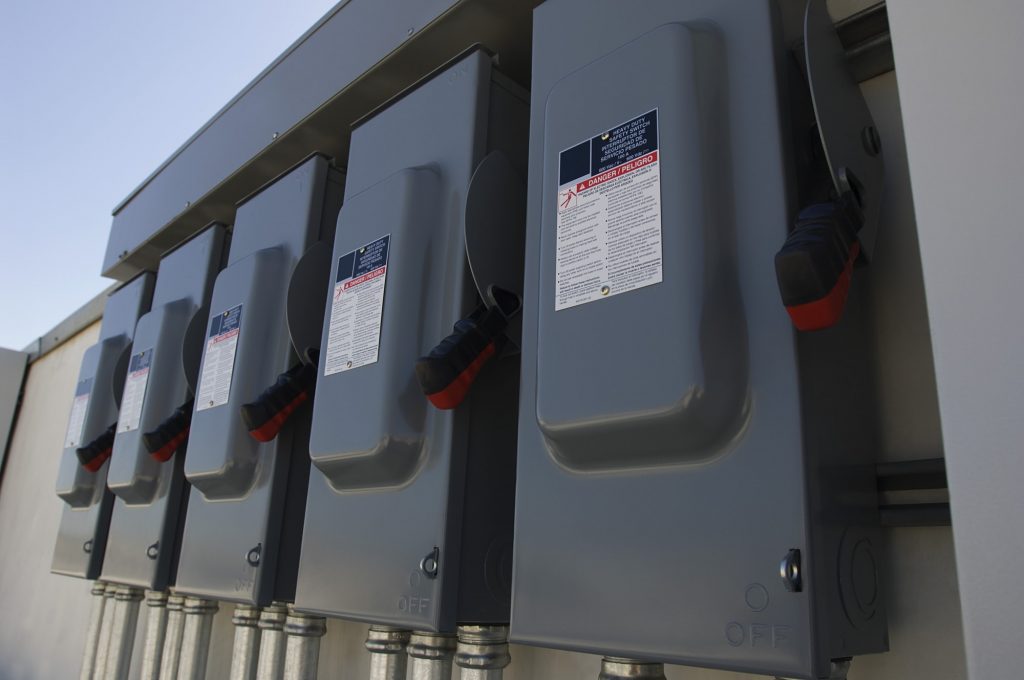
An electrical panel, breaker box or electrical distribution board (DB) box is an essential electrical component that plays an integral role in keeping you and your property safe. However, many people do not really understand what it is and, even the specific purposes that it serves in a building. Often installed in the garage, laundry rooms or basements, the panel mainly comprises circuit breakers and a main switch that controls the power supply throughout the entire property.
The key role of an electrical distribution box is to protect your building from the impacts of power surges and overloads. A surge is a sudden increase in the electrical current circulating in the building, which might occur whenever larger electrical appliances like air conditioners are turned on. An overload is whereby the circuit is forced to hold a higher amount of current than it is designed to handle.
For instance, connecting a 15 amps wire to a 20-amp circuit breaker will allow the transmission of 20 amps that is more than the wire is meant to handle. Such can easily cause fire and damage to your appliances. An electrical panel is designed to make sure that your electrical systems and appliances are not affected whenever there is power surge or overloads. As the name suggests, the breaker box comes in an enclosed steel casing that comprises of circuit breakers and other electrical components for controlling power supply.
How an Electrical Panel Protects Your Home
Electrical distribution board boxes are made to prevent fire and other unpleasant issues that might occur during power surge and overloads while also ensuring the efficient supply of electricity throughout your home. In case the current flowing through one of the circuit breakers goes beyond the allowed limits, the main switch will automatically flip, thereby breaking the circuit so that no more current passes through.
If the switch is turned on, current will resume flowing to the designated outlets across the building. An electrical distribution board box offers a central point from where you can easily control the flow of electricity to every section in your building. The fact that the main switch can automatically switch off during power surge ensures issues like fire are avoided even when you are away. Besides, you can also manually turn off the switch. The electrical panel also ensures that power outlets in areas prone to moisture and water like kitchens and laundry rooms have ground fault circuit breakers to shut down the power to prevent electric shocks.
The number of circuit breakers in the electrical panel will depend on the specific outlets required to adequately supply electricity across your home. As a result, it is always important that every circuit breaker is labelled to identify the particular outlet that they are linked to. The labels are usually located on side of the panels or next to the corresponding mains. The stickers can be labelled with the corresponding rooms or appliances including living room, hallways, kitchen, refrigerator, air conditioners, ceiling fans and others.
Other Components of an Electrical Distribution Board Box
Apart from the aforementioned circuit breakers and mains, the electrical panel also has other components that you should know. The other key components include fuse links, bypass equipment, bus bar and residual current detector. The bypass equipment comprises of special protection parts to cushion the system from the threats of power overloads and short circuits. The residual current detector offers protection against electrical shocks and fire from ground elements like moisture.
Although all electrical panels look similar, there are slight structural and technical characteristics that vary from one to another. However, the main distinctions mainly lie in their types, sizes and the number of circuit breakers as well as other electrical components installed therein. Generally, each country has standard requirements for electrical distribution board boxes that determine the specific technical and structural features. Therefore, you should always be keen to choose a panel box that meets the standard manufacturing and safety requirement as well as your home’s electrical needs.
Whether you are planning to install a new electrical distribution board box or having problems with the one in your home, contact Electrical Service Singapore for the best electrical panel installation, troubleshooting, repair and replacement service.
HDB Registered Contractor
License Number: HB-09-5474D

